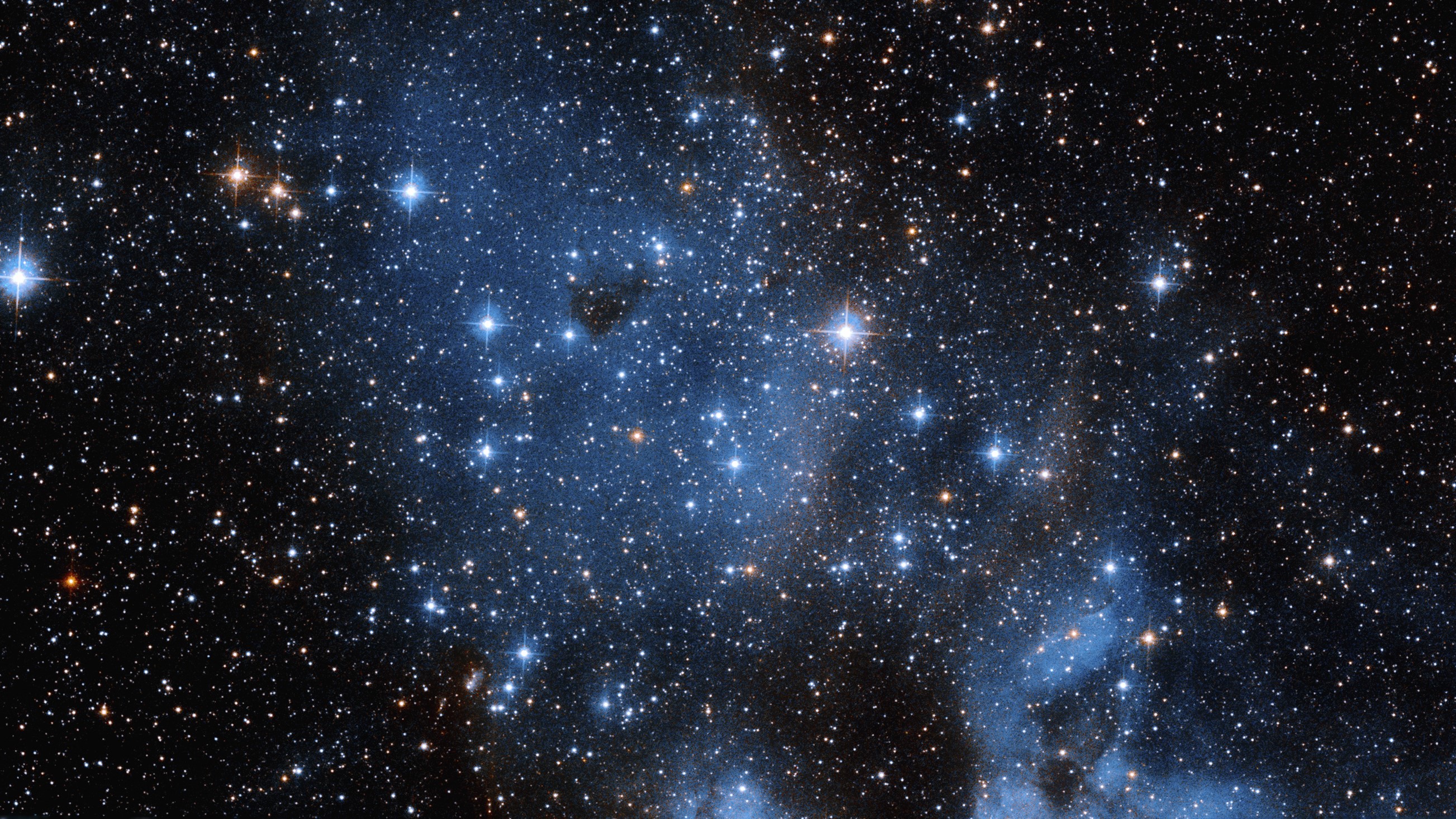Hubble Space Telescope spies young stars amid glowing interstellar gas
NASA says these stars are roughly 10 million years old.

In a new Hubble Space Telescope image, the color blue tells a story of young stars.
A recent image from the Hubble Space Telescope team showcases NGC 1858. Astronomers call this object an open cluster, which means these stars are gathered together, loosely bound by their mutual gravity. They are not tightly packed, so their collective shape in the sky is irregular. But there's more happening here.
This patch of sky is also an emission nebula. The blue haze behind the scattered jewels of the open cluster signals to astronomers that star formation recently finished or is still underway.
Related: The best Hubble Space Telescope images of all time!
The mesmerizing blue swaths appearing at the center and bottom right of this image is gas. Thanks to ultraviolet radiation that once came off stars, the gas has ionized and glows in visible light.
Most of the foreground stars in this image are about 10 million years old and roughly 160,000 light-years away from Earth. NGC 1858 is located in a dwarf satellite galaxy of the Milky Way, called the Large Magellanic Cloud, which to skywatchers appears as a smudge in the southern sky.
"The stars within this young cluster are at different phases of their evolution, making it a complex collection," Hubble officials wrote in a statement published on Dec. 2.
Get the Space.com Newsletter
Breaking space news, the latest updates on rocket launches, skywatching events and more!
And in the midst of the young stars is a newborn.
"Within NGC 1858, researchers have detected a protostar, a very young, emerging star, indicating that star formation within the cluster may still be active or has stopped very recently," Hubble officials wrote.
NASA runs the Hubble Space Telescope alongside the European Space Agency (ESA). According to ESA officials, there's scientific value to studying star clusters beyond the limits of the Milky Way.
"All star clusters are of great interest to astronomers, because the stars in them all formed at approximately the same time and location," ESA officials wrote in a description of open clusters.
"Cluster studies have been vital in working out how stars evolve and the power of Hubble allows these studies to be taken beyond our own Milky Way and out into the Local Group of our neighboring galaxies," the officials wrote.
So beyond its blue beauty, this image can paint a bigger picture about star life in our corner of the cosmos.
Follow Doris Elin Urrutia on Twitter @salazar_elin. Follow us on Twitter @Spacedotcom and on Facebook.
Join our Space Forums to keep talking space on the latest missions, night sky and more! And if you have a news tip, correction or comment, let us know at: community@space.com.

Doris is a science journalist and Space.com contributor. She received a B.A. in Sociology and Communications at Fordham University in New York City. Her first work was published in collaboration with London Mining Network, where her love of science writing was born. Her passion for astronomy started as a kid when she helped her sister build a model solar system in the Bronx. She got her first shot at astronomy writing as a Space.com editorial intern and continues to write about all things cosmic for the website. Doris has also written about microscopic plant life for Scientific American’s website and about whale calls for their print magazine. She has also written about ancient humans for Inverse, with stories ranging from how to recreate Pompeii’s cuisine to how to map the Polynesian expansion through genomics. She currently shares her home with two rabbits. Follow her on twitter at @salazar_elin.









